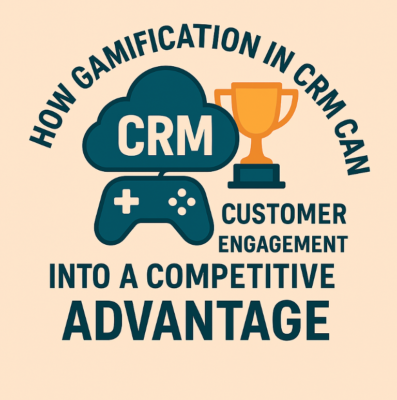
Customer Relationship Management (CRM) has evolved from a simple data management tool into a dynamic platform that fosters customer engagement and loyalty. One of the most innovative strategies businesses are now adopting is gamification—applying game mechanics to CRM to enhance customer interaction and drive business growth. By integrating elements such as rewards, challenges, and leaderboards, companies can turn CRM into a competitive advantage. Here’s how gamification is transforming customer engagement.
1. Increasing Customer Engagement Through Rewards
Gamification in CRM creates an interactive and rewarding experience for customers. By offering points, badges, and incentives for specific actions—such as making a purchase, leaving a review, or referring a friend—businesses can encourage repeat engagement. When customers feel rewarded, they are more likely to stay loyal to the brand and continue interacting with the company.
2. Encouraging Customer Loyalty with Progress Tracking
A sense of progress is a key motivator in gamification. CRM systems can use progress bars, status levels, or tiered membership programs to make customers feel a sense of achievement. For instance, loyalty programs that upgrade customers to higher tiers based on their activity create a strong incentive for continued engagement. This psychological trigger keeps customers invested in the brand.
3. Driving Sales Through Competitive Elements
Leaderboards and competitions can boost customer participation and sales. Businesses can create challenges where customers earn points for purchasing products, engaging on social media, or completing surveys. Customers who see their rankings in a leaderboard are more likely to stay engaged, increasing their spending and brand interaction.
4. Enhancing Customer Experience with Interactive Elements
Gamification makes CRM systems more interactive and enjoyable for customers. Instead of standard surveys or feedback forms, companies can introduce quizzes, spin-to-win promotions, or treasure hunts that engage customers in a fun way. These interactive experiences not only make data collection easier but also create positive brand associations.
5. Motivating Sales Teams for Better Performance
Gamification isn’t just for customers—it can also be used internally to motivate sales teams. CRM platforms with built-in gamification elements, such as achievement badges, commission-based leaderboards, and performance challenges, can encourage healthy competition among employees. This leads to higher productivity, better customer service, and ultimately, increased sales.
6. Leveraging Data to Improve Engagement Strategies
Gamification in CRM also provides valuable data insights. Businesses can analyze how customers engage with challenges, rewards, and competitions, helping refine marketing and engagement strategies. Understanding what motivates customers enables companies to personalize experiences further and optimize their CRM initiatives for maximum effectiveness.
Conclusion
Integrating gamification into CRM is a powerful strategy for transforming customer engagement into a competitive advantage. By leveraging rewards, progress tracking, competitive elements, interactive experiences, and employee motivation, businesses can enhance customer loyalty and sales performance. As CRM systems continue to evolve, companies that embrace gamification will stand out in an increasingly competitive market, creating lasting relationships with customers while driving business success.